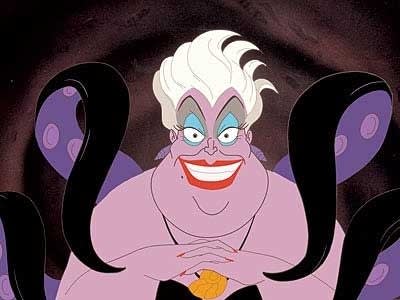What girls learn from movies

[image]
A study on women and girls in children's movies finds that most female characters are either unrealistic objects of desire, or - like "Ursula" in the Little Mermaid - evil.
For many parents, their dvd player can be a godsend when it comes to getting their kids to sit still for a couple of hours, thereby freeing themselves up to tackle projects around the house, or simply cook the evening meal.
And as long as it's a kid movie, there's no need to worry about what they're watching, right?
Create a More Connected Minnesota
MPR News is your trusted resource for the news you need. With your support, MPR News brings accessible, courageous journalism and authentic conversation to everyone - free of paywalls and barriers. Your gift makes a difference.
Wrong.
An article in today's New York Times profiles the efforts of actress Geena Davis who, once she became a mother herself, was curious to find out how kids movies portray women and girls. In turns out, for the most part, they don't.
[Davis] founded the Geena Davis Institute on Gender in Media in 2006 and sponsored an academic study -- enlisting professors at the U.S.C. Annenberg School for Communication and Journalism to analyze the content of 101 children's movies released between 1990 and 2004. Last year she followed up with an analysis of films from 2004 to 2009. Both reached the same conclusions. Of the 5,554 speaking characters studied, 71 percent were male and 29 percent were female. That's a 2.42 to 1 ratio, which has not changed much in 20 years.
Not only were female leads in short supply, researchers found, but in crowd scenes and group scenes only 17 percent of characters were women. In addition, female characters were far more likely to be "hypersexualized" -- 25 percent were wearing tight , provocative, revealing clothing, compared with four percent of males -- and physically attractive (14 percent versus. 3.6 percent). The female characters were younger than their male counterparts, and the sole goal of the females was usually to find romance. Not one of the animated female characters had a shape that was possible in real life.
Davis is taking the results of her institute's study to meetings of screenwriters, actors and animators in the hopes that they'll make an effort to make more of the characters in their movies female.